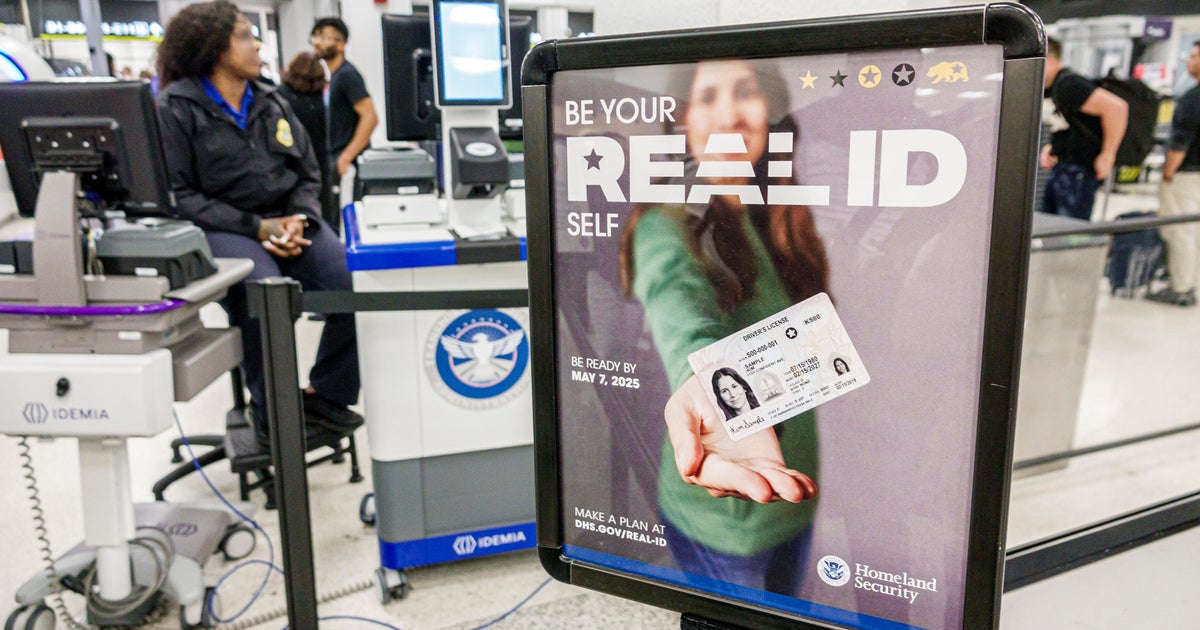I-Team: Old Maps Flooding Homeowners With Problems
MIAMI (CBS4) - Wine might get better with age, but there's nothing fine about aging flood maps. Yet the CBS4 I-Team has discovered that the rates many South Floridians pay for flood insurance are based on outdated, inaccurate, and flawed mapping standards and techniques.
I-Team Investigative Reporter Stephen Stock uncovers the information flood officials don't want you to know.
The three stages to financial ruin for the National Flood Insurance program came in the form of hurricanes Katrina, Rita and Wilma… all in 2005.
As the levee's broke in New Orleans, and coastal waters overwhelmed the gulf coast and Florida's Atlantic shores, an outdated and underfunded system of handling flood insurance... snapped like a twig under the weight of claims and payouts.
"We have a flood protection system that is just simply not working," says Florida Senator Bill Nelson.
According to Nelson, one of the things not working is the amount of red ink.
Katrina, Rita and Wilma drove the National Flood Insurance Program $18.7 billion dollars into debt.
In April, FEMA director Craig Fugate told congress, "It is unlikely that we will ever retire this debt."
One way to tackle that problem Fugate explained is to increase the number of people who must pay for flood insurance. FEMA's goal he announced is a 5% annual increase.
Jacinto Acebal has lived in his condo building in West Miami-Dade, since it was built 9-years ago.
"And all of a sudden they put us into a flood zone."
Has his complex ever flooded? "No flood whatsoever."
Miami-Dade County Commissioner Jose "Pepe" Diaz has a theory. "I believe that they have to make the money somewhere. That's a heavy debt."
Diaz represents the Sweetwater area. During the 2000 "no name" storm, Sweetwater and much of West Dade was devastated by flooding. Since then, Diaz says the county got $800 million from the federal government to solve the flooding problem in his district and other parts of the county.
"We did everything that was, at the time, cutting edge technology within the water systems. We fixed all this stuff working together."
Yet hundred of his constituents now find themselves mapped into flood zones or higher risk areas.
A map of Miami-Dade from 1994 compared to the new FEMA map issued in September of 2009 shows the many changes 15 years later. Though officials say many Miami-Dade residents were mapped out of a flood zone, the map shows that others now find themselves, for the first time, suddenly living in a flood zone without ever moving.
That means that for the very first time, many people who suddenly find themselves in a flood zone, are being required to carry flood insurance by their mortgage lender.
And often, the insurance isn't cheap, as Acebal and his neighbors found out.
"One person was $800, another one was $2,000, another one was $5,000. And these are the same type of units."
So what's going on? The I-Team asked the chief of Miami-Dade County's water management division.
"You can see that whole intersection is out of the flood zone before," said Marina Blanco-Pape. "The last maps, at least for Miami-Dade county, they were done in '94, '95."
That's right! 15-years have lapsed since FEMA published new flood maps for Miami-Dade, even though the agency's own website says "flood risk changes from year to year."
"There are supposed to be new maps every five or six years," says U.S. Senator Bill Nelson.
Even more astounding, the I-Team has learned that a critical elevation measurement standard, used to create the FEMA flood maps, hasn't changed since the roaring 20's!
Flappers, fringe, the Charleston and speakeasies! It was 1929, three years after the deadly 1926 "unnamed" hurricane in Miami, and two years after the great Mississippi flood of 1927, when the U.S. government set the measurement standard that has been used to create elevation levels for flood maps, including the newest maps for Miami-Dade county.
"The maps are FEMA maps. We cannot publish those maps," says Blanco-Pape. "Unincorporated Miami-Dade County has a storm water master plan and we do modeling continuously. And why is that? Because conditions change."
You can try to change your flood zone designation through an appeal. But you'll have to hire a personal property surveyor and pay for the privilege of trying to prove the government wrong.
Jacinto Acebal did. So did 318 of his neighbors.
"Guess what? We're not in a flood zone!"
Even though FEMA told congress that the special flood hazard zone area has increased by 7% across the country the I-Team has learned that here in Miami-Dade more property owners were mapped *out* of flood zones than were mapped *in*.
Meanwhile, new FEMA flood maps are scheduled for release in Broward County next year.
For more information in Miami-Dade, call 305-372-6466.



